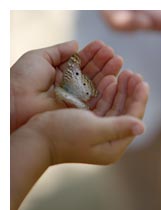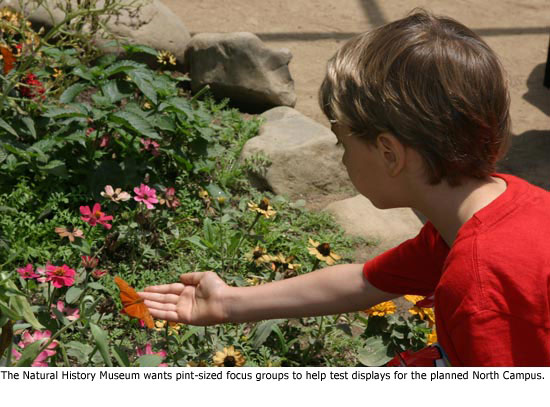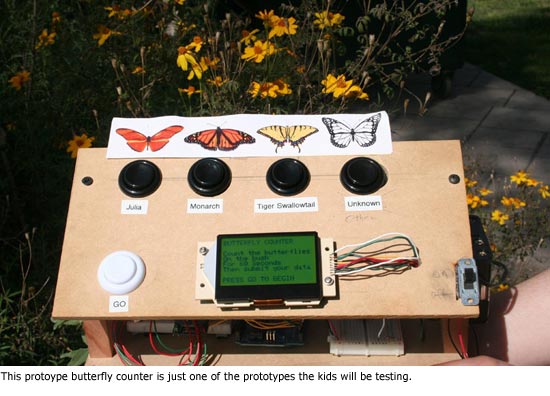Calling all junior nature lovers
March 22, 2011
Will kids go wild for a machine that mimics the mouth of a pill bug? How durable should a soil sifter be if you want it to last for more than a field trip or two? Will people examine a compost pile without an invitation?
Inquiring minds at the Natural History Museum of Los Angeles County want to know.
In less than a month, the museum’s wildly popular Butterfly Pavilion will open for the spring and summer. In past years, the action has all been inside, in the fluttering realm of some 55 species of moths and butterflies.
But this April 10 when the Pavilion opens, the creatures with wings won’t be the only ones under observation. In an effort to perfect displays planned for the new North Campus gardens that will open in 2013 at the museum, an assortment of prototype gadgets and interactive science exhibits will be tested throughout the summer in the outdoor space around the greenhouse-like structure.
And museum workers are looking to visitors, young and old, for help.
“We’ll be making observations on how people use these interactive exhibits,” says Lila Higgins, the museum’s manager of citizen science and live animals. “We’ll be talking to visitors, listening to their feedback.”
New displays will be set up, one or two at a time, to see how visitors use them and to pinpoint aspects that need tweaking. Pint-sized focus group (aka kids) are especially invited to weigh in.
Museum officials hope the new garden—part of a sweeping renovation that began last year with the “Age of Mammals” exhibition and that this summer will double the museum’s dinosaur exhibits with a new Dinosaur Hall—will teach visitors more about Southern California’s natural environment and give the museum experience a novel outdoor component. Proposed areas include a Home Garden with vegetables and fruit, an Urban Wilderness featuring many native California flora and fauna and a “Get Dirty Zone” where kids can, for example, play in a dirt pile.
Interactivity, however, is considered to be key, and museum staffers have spent months brainstorming ideas for displays, Higgins says.
“I personally love looking through compost piles and finding little beetles and grubs in there,” she says, “but will other people want to do that?
Ideas that have made it to the prototype stage include a butterfly counter, a periscope that will give children a birds-eye view of the landscape, a gizmo that will let kids sift soil and—dear to Higgins’ heart—a heart machine that will demonstrate how pill bugs break down leaves to help create compost.
“Everybody knows that worms aerate the soil, but not everyone knows what pill bugs do,” says Higgins. “So we were all around the table, with ideas flying around, and we knew we were going to have this Get Dirty Zone, and so we started talking about what pill bugs do. Well, they shred leaves. So what if a kid could have the chance to be like a pill bug? Maybe turn a crank and see that a pill bug’s mouth is like a leaf shredder?”
Within a few months, they had a prototype from Cinnabar California Inc, the Los Angeles firm that designed and built the Age of Mammals exhibit. Devised so that children as young as 5 can access it, it’s a metal mechanism in a wooden box that demonstrates the mechanics of the bug’s mouth.
“I don’t know if I’ve seen anything like it anywhere in the world,” says Higgins. “Maybe it’s a bit wacky, but the first time I saw the mock-up—well, when I see a kid use it, I’m going to be so excited.”
Posted 3/22/11
















 405 bridge work causes a stink
405 bridge work causes a stink